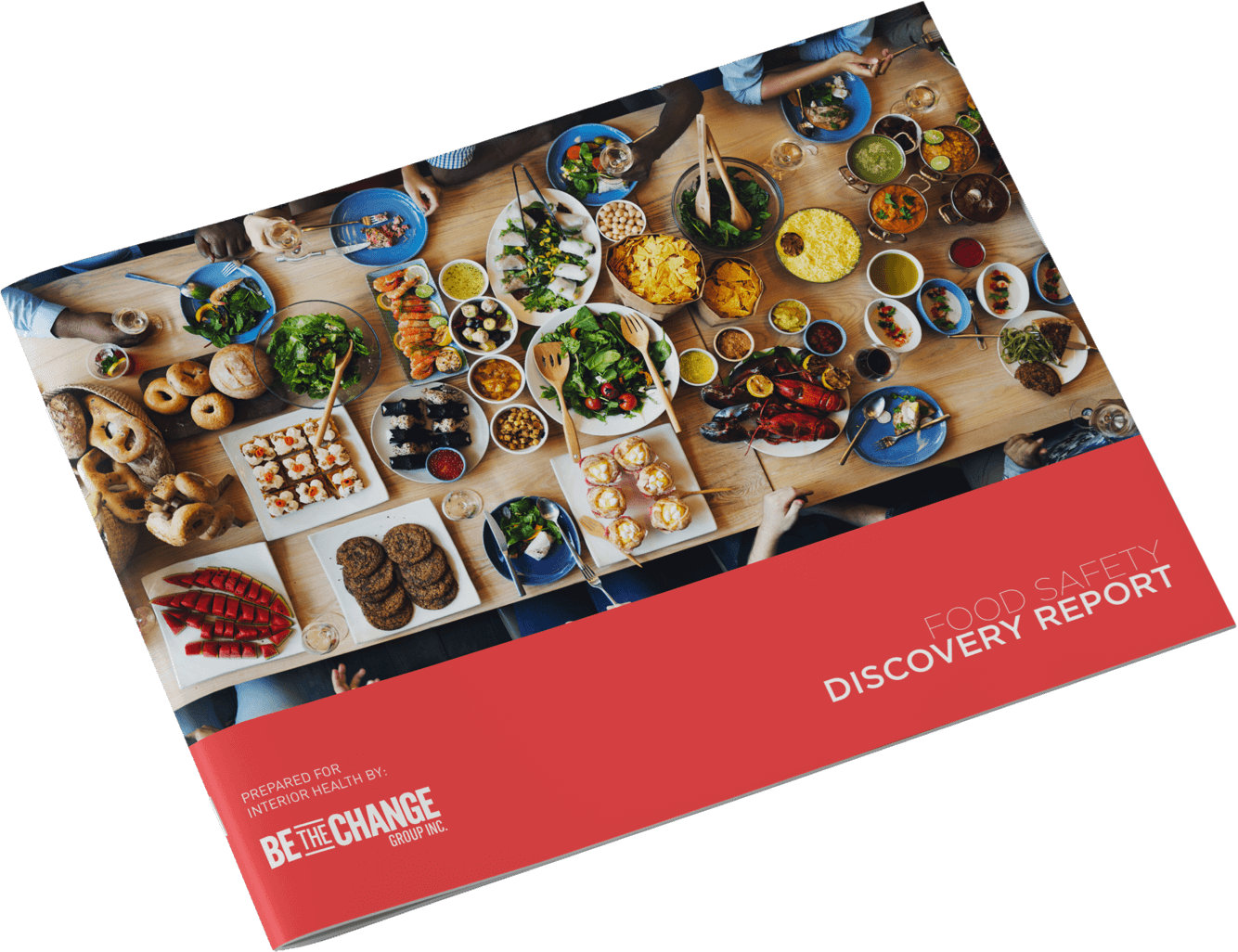Food safety research and community engagement
As a provider of a wide range of integrated health care programs for and services to residents across B.C.’s southern interior, Interior Health is determined not only to set new standards of excellence in the delivery of health services in B.C. but to improve health and wellness by providing much-needed health services to the highest professional and quality standards.
To address the lack of public understanding about food safety, and with the goal of reducing the incidence of food borne illness, Interior Health was considering the implementation of a food safety rating poster program to provide the public with accessible and easy-to-understand information about food facility inspection findings; assist food service establishments in upholding the highest food safety standards and practices; and support Environmental Health Officers (EHOs) in their health inspections of food service establishments.
Food safety rating poster programs are designed to display food safety inspection results at the entrances of food businesses. They are meant to inform the public about the food safety at a given food service establishment, and have the ultimate goal of reducing the incidence of foodborne illness by improving food safety practices and inspection outcomes in food facilities. Interior Health hired Be the Change Group to determine whether such a program would be feasible and desired in the Interior region of B.C. through a best practice review and comprehensive community engagement.
The best practice review report comprises comprehensive research on eight jurisdictions globally that have already implemented their own customized food safety rating poster programs, and it informed the design of the community engagement.
The community engagement in the Interior Health region included focus groups with food service owners/operators, the public, and inspectors across the region; the design, distribution, and analysis of a survey of 286 food service industry personnel from urban and rural settings in the region; and key informant interviews with high level stakeholders.
We presented our findings to senior Interior Health leadership in-person and in our final discovery report, ultimately informing decisions about the viability and roll-out of the program.
Sector
Services
impact
The Change
- Our discovery ultimately informed decisions about the viability of the program. For a food safety rating poster program to be accurate and informative, food service facilities must be inspected more frequently and scoring must be consistent from inspector to inspector.
- Interior Health has since implemented an inspector training to ensure that rating consistency and quality is standardized for all inspectors.

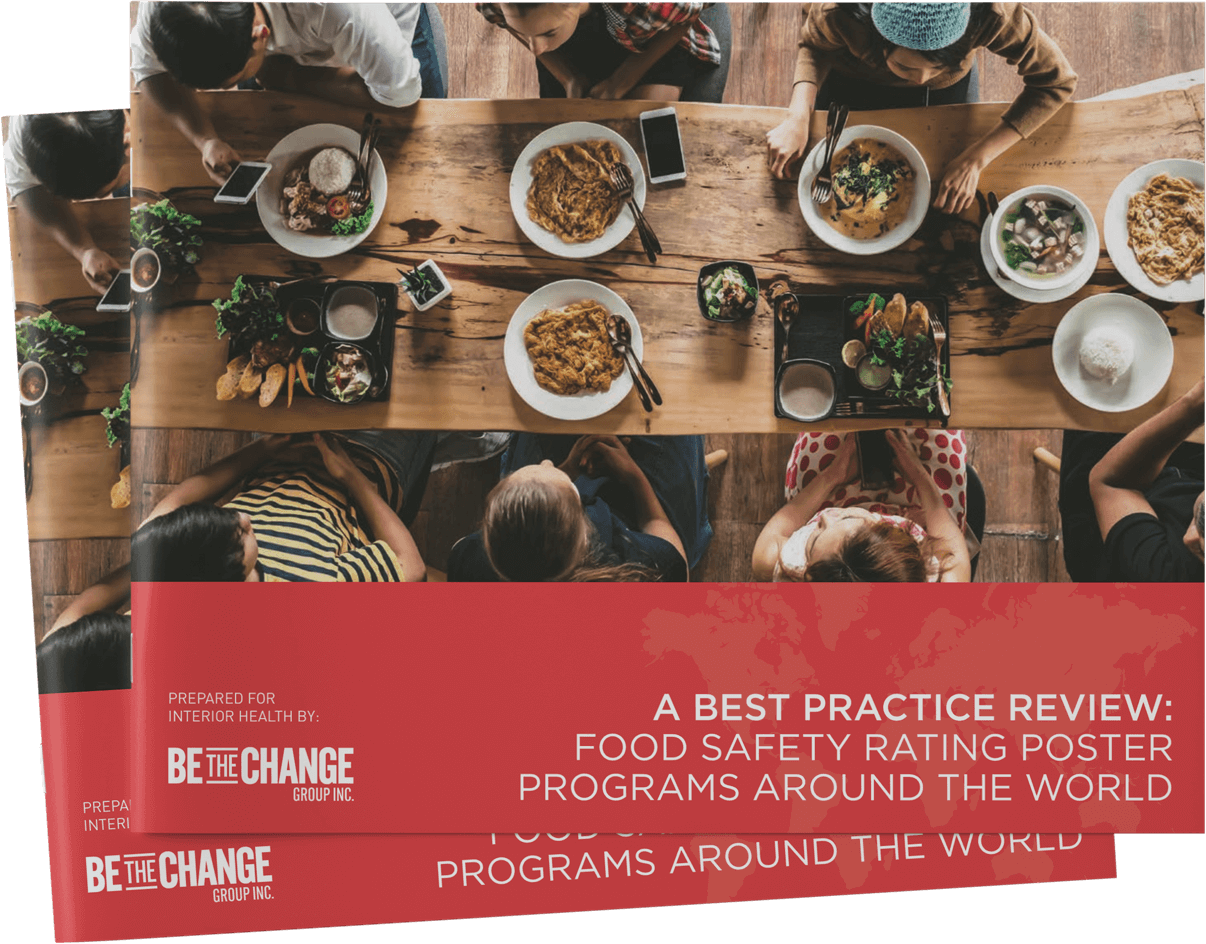
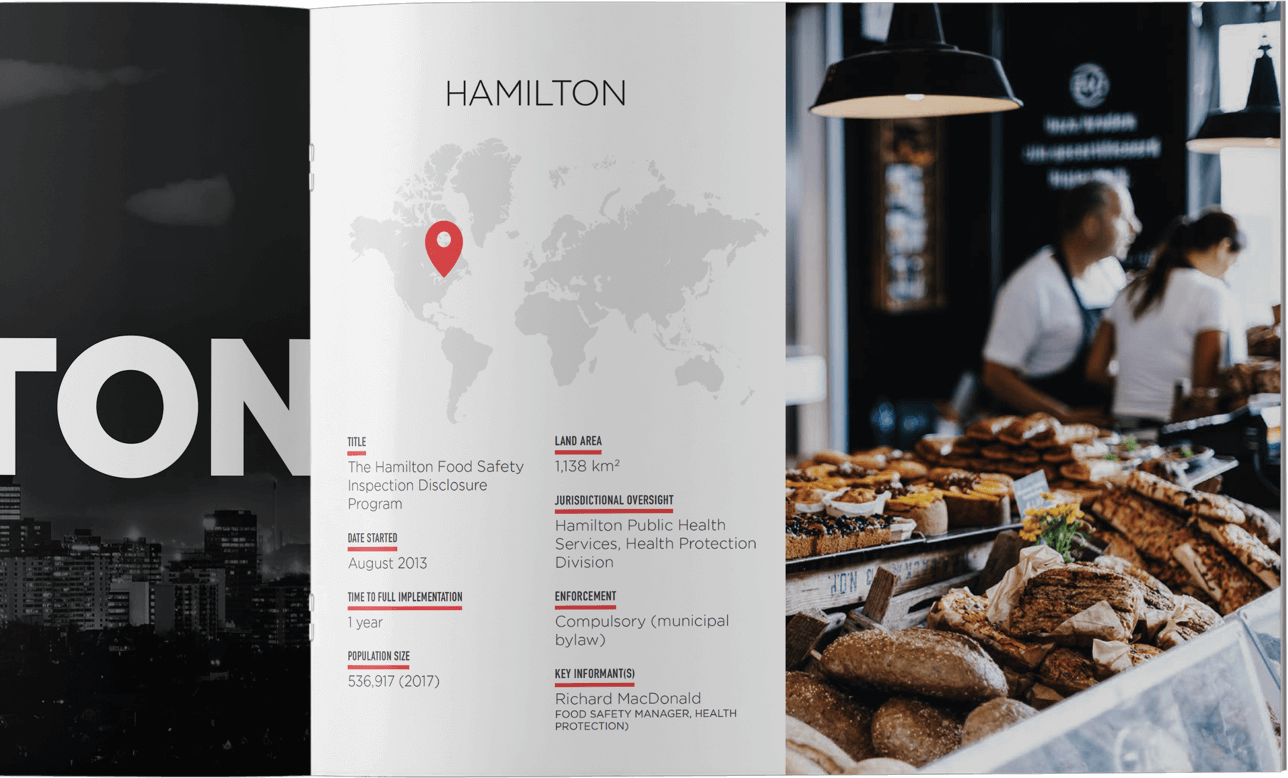
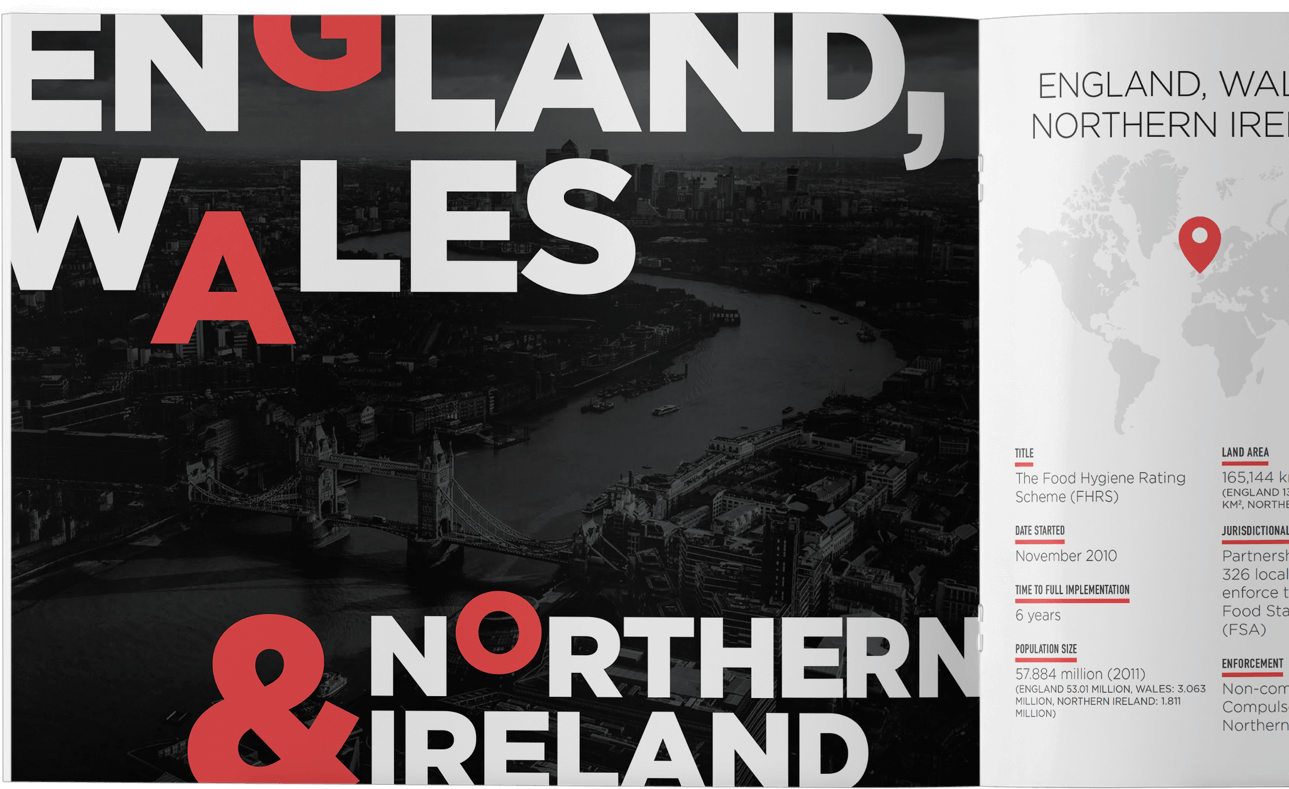
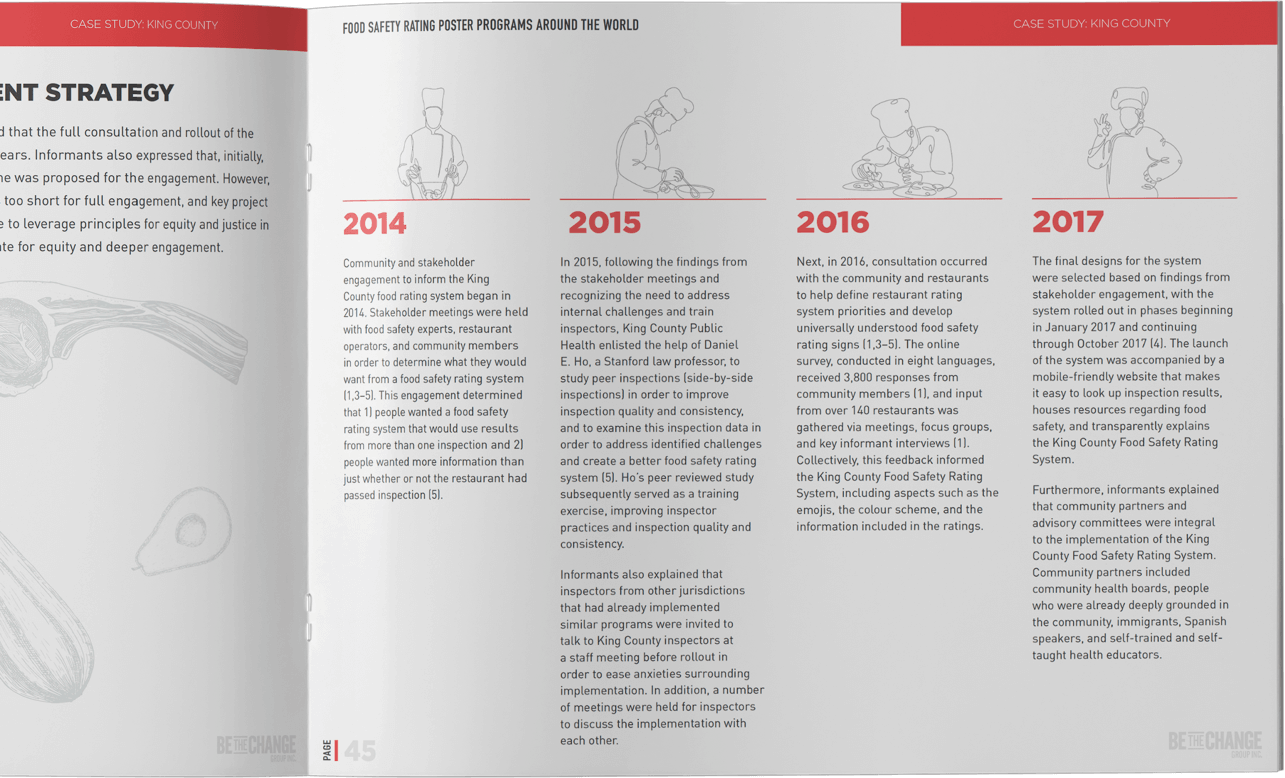
Discovery
Community Engagement
Over a four month period, our team conducted 12 key informant interviews, 18 focus groups, and a 286-person survey of varied stakeholders, using data collection questions and tools developed with the Interior Health team, and reviewed and approved by A project Ethics Community Consensus Initiative (ARECCI).
COMMUNITY ENGAGEMENT
18 focus groups
Over a 15-day period, we conducted six focus groups with the general public, six with personnel from the food service industry, and six with IH Environmental Health Officers (EHOs) across the Interior Health region. Focus group participants were recruited using a variety of methods in order to ensure robust representation.
COMMUNITY ENGAGEMENT
12 key informant interviews
We conducted 12 key informant interviews with stakeholders with experience in various capacities related to food safety. The semi-structured interviews were conducted via teleconference using interview guides, and were recorded and transcribed. The transcriptions were thematically analyzed by our research team and findings were summarized in the final discovery report.
COMMUNITY ENGAGEMENT
Survey of 286 food service industry personnel
We developed and distributed an anonymous and confidential, internet-based survey to 3,441 food service owners/operators via client-supplied email addresses and by word of mouth. Descriptive statistics were calculated for every variable within the survey, and qualitative survey responses were thematically coded and analyzed by two researchers.
our solution
All findings from our community engagement were compiled, analyzed, and presented in both summary and detail in our 153-page discovery report, which also provides a detailed methodology, appendices featuring interview guides and questions, discussion, limitations, and near- and long-term recommendations.
